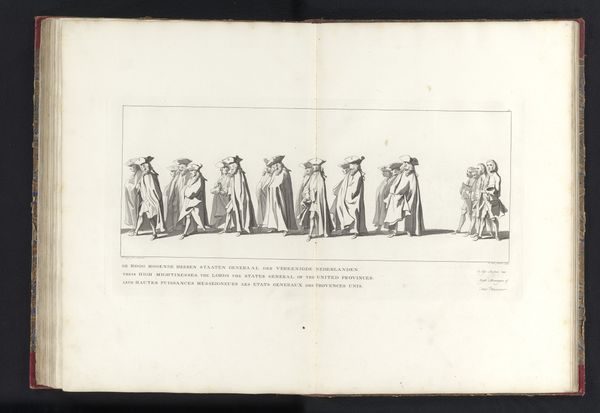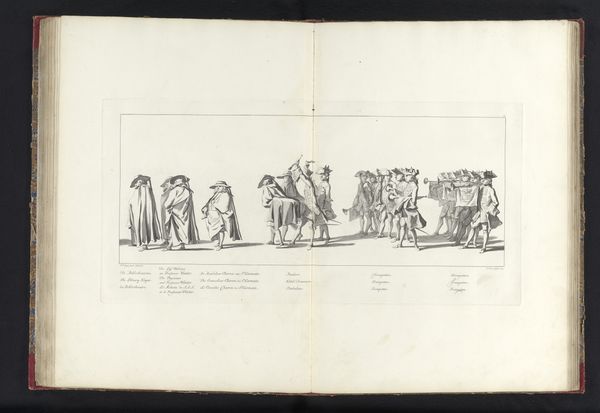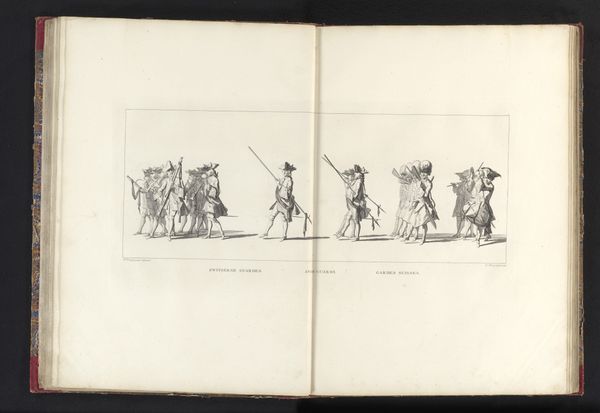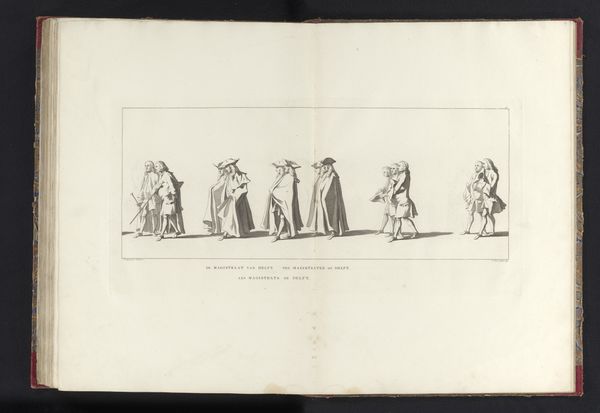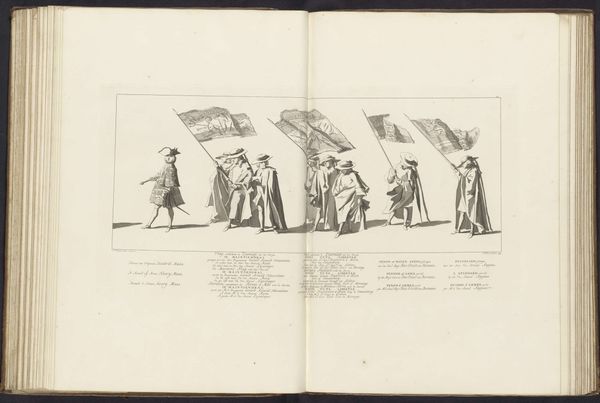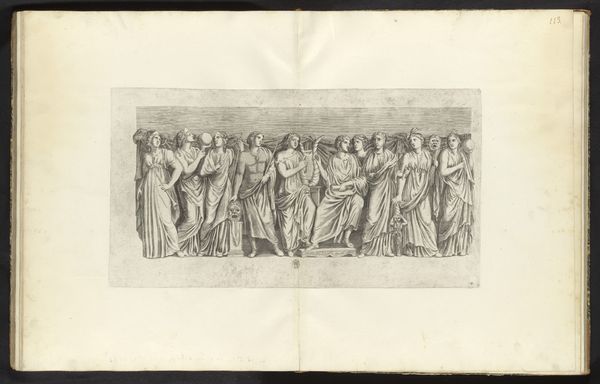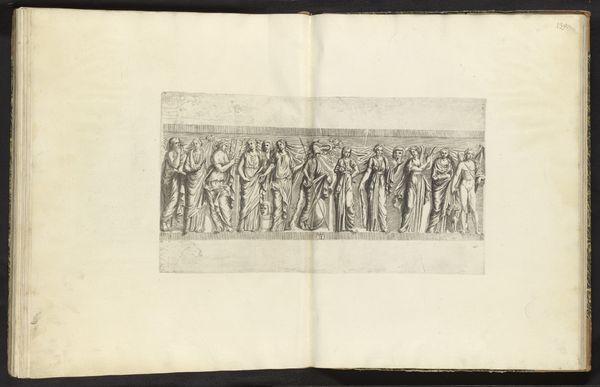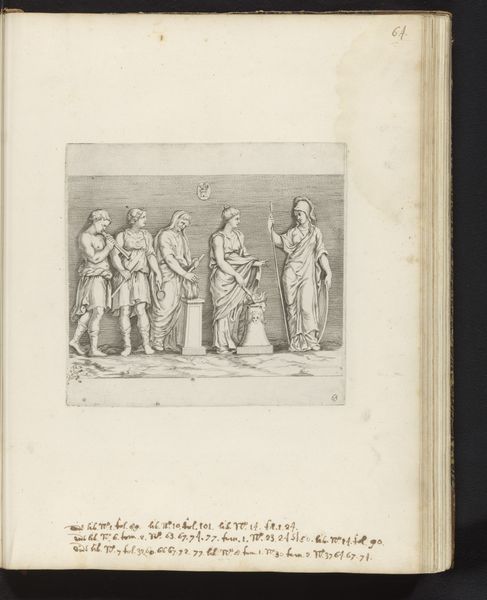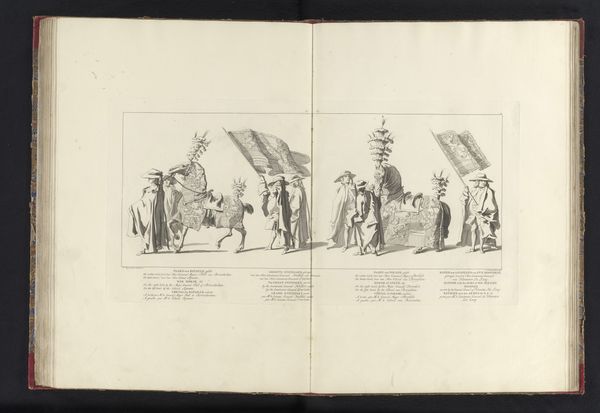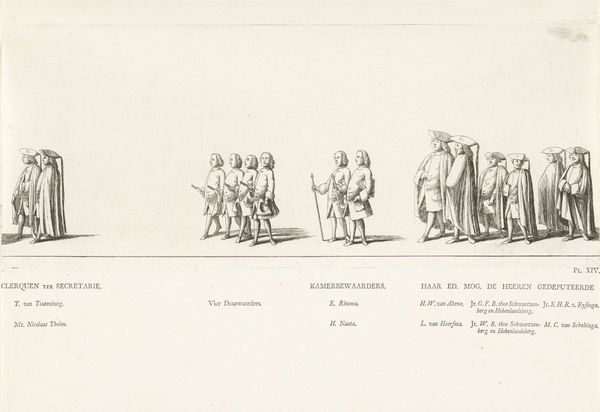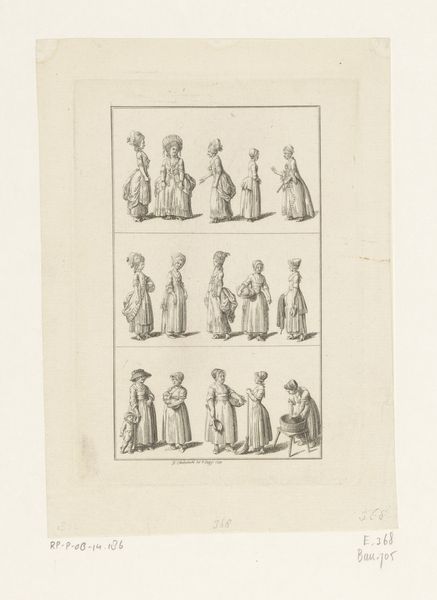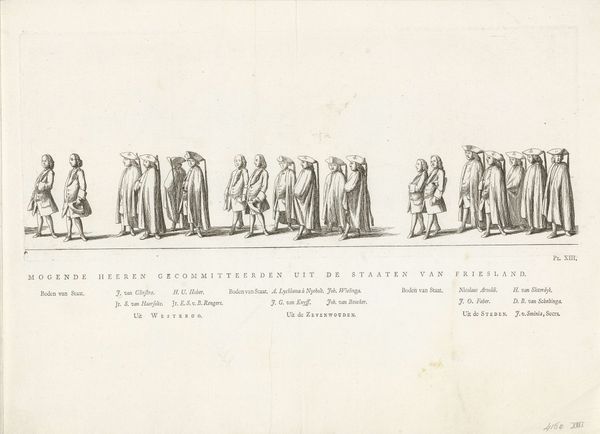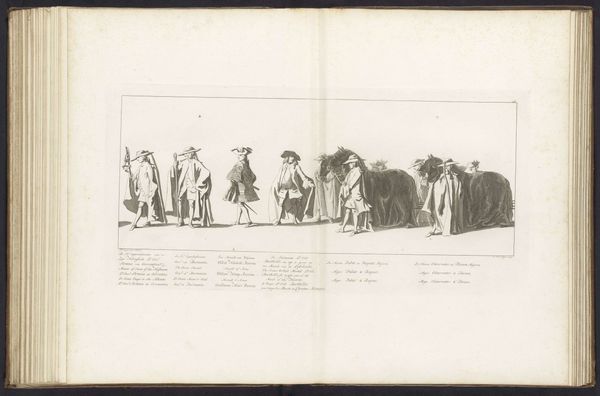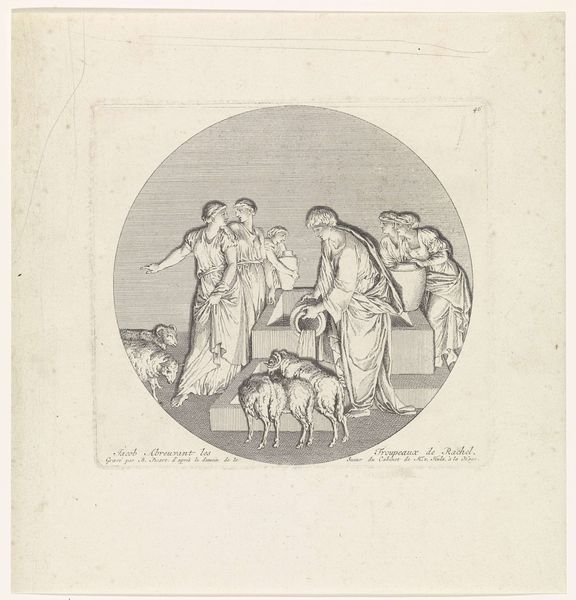
drawing, print, engraving
#
drawing
#
baroque
# print
#
figuration
#
engraving
Dimensions: height 270 mm, width 560 mm
Copyright: Rijks Museum: Open Domain
Jan Punt created this print in 1752; it's titled "Lijkstatie van Willem IV, 1752, plaat 19." It depicts the funeral procession of Prince William IV of Orange-Nassau, a significant figure in Dutch history. In the 18th century, funerals of prominent figures were grand public events, reinforcing social hierarchies. Punt's print meticulously documents the procession, showing the order and participants, from family members to representatives of various institutions. The somber attire and veiled figures emphasize the solemnity of the occasion. But these are also men of status and privilege. Consider how these elaborate displays of mourning also functioned as political statements, reinforcing the power and legitimacy of the ruling class. While ostensibly about mourning, such processions were also very much about power, its transfer, and its visual representation. What do you think such a display communicates to the general public?
Comments
No comments
Be the first to comment and join the conversation on the ultimate creative platform.
